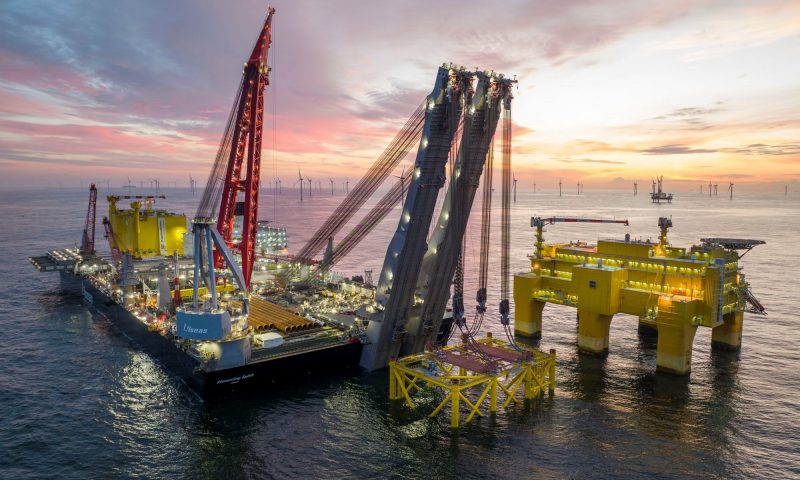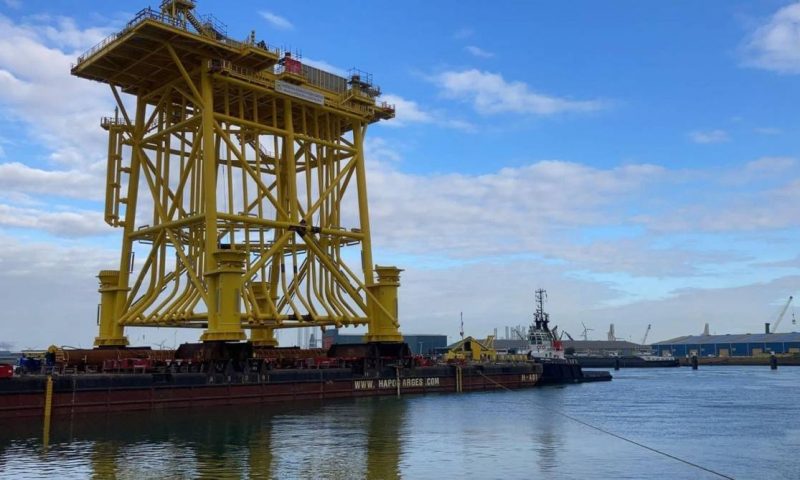
Large-scale offshore tender sets TenneT on course to deliver 2030 offshore expansion targets
Achieving offshore targets requires new tender approach– novel framework agreement offers growth opportunities for technology companies and transmission system operators alike
Set goals: investment security, employment, and developing the required resources and supply chains
TenneT to connect 40 gigawatts of offshore expansion in the German and Dutch North Sea
In the Esbjerg Declaration in May at the North Sea Energy Summit, Germany, the Netherlands, Denmark, and Belgium agreed to jointly install at least 65 gigawatts of offshore wind energy by 2030. Transmission system operator (TSO) TenneT will account for almost two-thirds of this with 40 gigawatts – 20 gigawatts each in the German and Dutch North Seas. Achieving these offshore targets requires a new tender approach to ensure that the supply chain is able to anticipate on necessary investments.
Stimulate market with framework agreement
TenneT COO Tim Meyerjürgens said: “In order to meet the challenges posed by this major expansion target and achieve its goals, we are breaking new ground in cooperation with our industry partners, sending a strong signal to the market with a large-scale tender. The goal is to set out a new kind of framework agreement that allows for scaling through efficiently expanding these new offshore systems – both for technology companies and for other transmission system operators. This will stimulate the market to build up the resources and comprehensive supply chains we need in a targeted and – crucially – in faster way. In these turbulent times this provides the industry with the investment security they need.”
TenneT plans to enter into a cooperation agreement with key market partners for a period of up to eight years. The agreement covers offshore platforms and onshore stations, as well as the converters for the two-way conversion between alternating and direct currents. The latter is based on the innovative 2-gigawatt high-voltage direct current technology for a forecast 15 to 20 offshore grid connection systems. Total order volume is estimated to be up to 30 billion euros.
The impetus of the large-scale tender sends a strong signal to the market. It underlines the long-term purpose of building up all the required resources such as industry sites, staff, and materials. Whereas up to now individual projects have always been tendered consecutively, the entirety of this large-scale tender will provide the market with the investment security and planning acceleration it needs.
Accelerated expansion offers growth opportunities and strengthening of supply chains
“The accelerated expansion of renewable energies offers many opportunities. To take advantage of them, strong cooperation is necessary at all levels. This ground-breaking cooperation framework enables more flexibility, technological progress, and planning security for market players. It also shows which innovative solutions we are working on with the market to help us tackle and implement the expansion targets set by the governments in a targeted way. Our new approach will stimulate and drive the entire market across the value chain, allowing us to attract new industrial companies and help create new jobs. This benefits all parties through more employment, growth, and the strengthening of European supply chains,” Tim Meyerjürgens added.
Background / 2GW Program
Currently, TenneT’s offshore connection capacity comprises around 7.2 gigawatts in the German North Sea and approximately 2.5 gigawatts (GW) in the Dutch North Sea. TenneT’s innovative 2GW Program is crucial in managing the offshore energy transition and will help Europe become the world’s first climate-neutral continent. This new standard combines our extensive expertise in offshore grid connections with a unique transnational approach. With its strong focus on harmonisation and standardisation, it provides a blueprint for future offshore grid connection systems and enables faster deployment. At the same time, the larger capacity of two gigawatts per system reduces the number of grid connections required. The 2GW Program sets a new pace for the European energy transition. It will provide Europe and its inhabitants with more green energy in a safe and cost-effective way – with the lowest possible environmental impact.













